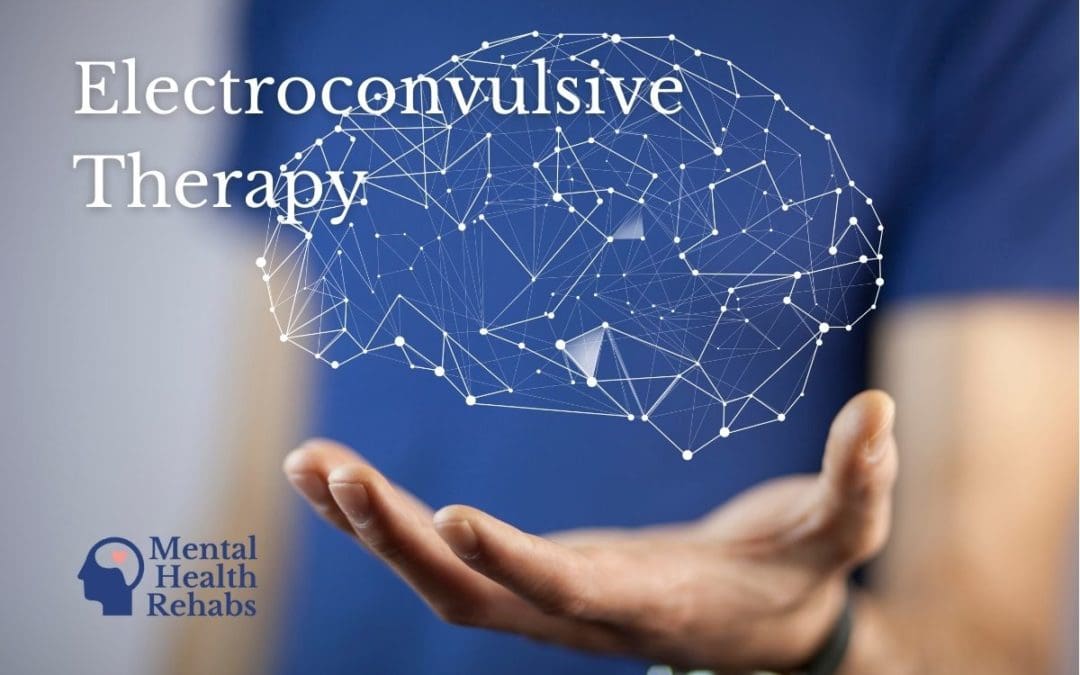Electroconvulsive therapy (ECT), perhaps better known more crudely as “shock therapy”, is a medical treatment that’s been proven to be one of the most effective for severe depression and several other serious mental illnesses—it works for about 80% of all patients! It’s not like traditional therapy that relies on verbal communication. Instead, ECT directly stimulates the brain through electrical impulses. This is what’s known as a brain stimulation treatment which also includes the likes of transcranial magnetic stimulation (TMS) and Vagus Nerve Stimulation (VNS).
How Does Electric Shock Treatment Work?
Patients under general anesthesia are given short bursts of electric pulses through nodes attached to the patient’s head. These small bursts of electricity trigger tiny seizures which, for reasons that have yet to be fully determined, can alleviate symptoms or even improve neurobiological health for longer-term relief. Here’s what is known so far:
New brain cells develop in the hippocampus after electrotherapy—which is huge. In addition to playing a key role in memory, the hippocampus also regulates the HPA axis which is involved in our stress response. Further, studies have found a correlation between chronic depression and a smaller, shrunken hippocampus. The ability to reverse these effects could prove a promising solution to even better mental health treatment outcomes for depression.
Not only can ECT help reverse hippocampal shrinkage, according to a recent study conducted at John Hopkins University, electric shock therapy also caused positive molecular changes in these new cells. It effectively ‘turned on’ the Narp gene (this affects how many dendrites a brain cell has and thus, how well it’s able to communicate with other brain cells) which was found to be lacking in depressed test subjects.
However, there are still limits to this treatment method. ECT is not a cure for depression or any other mental illness. Additionally, electroconvulsive therapy alone might not be enough. It is most effective when combined with other treatment methods such as psychotherapy (talk therapy) or medication.
What It’s Like Getting ECT
While it may sound like something from a science-fiction movie, ECT is noninvasive, painless, and safe.
Patients will first undergo a psychiatric assessment and medical exam, and perhaps even a blood test and an ECG to ensure that they are healthy enough to receive the treatment. If deemed an eligible candidate, the patient will receive electroconvulsive therapy two-three times a week, for a total of 6-12 treatments, depending on the severity of the symptoms. These sessions are attended to by a team of medical professionals including psychiatrists, anesthesiologists, and a nurse or physician assistant (PA).
Patients are given a muscle relaxant and are put under general anesthesia (they remain asleep during the entire procedure). ECT typically takes between 15-20 minutes for the procedure itself, but accounting for recovery time, an entire ECT session typically takes about an hour.
What Is ECT Used To Treat?
Electroconvulsive therapy is most commonly used to treat severe depression. It has often been successful in the treatment of serious mental illness where other treatment methods have failed. It’s faster-acting than medication, which makes it particularly effective in helping those that are suicidal, and is recommended in severely depressed patients that weren’t responsive to medication.
ECT has also proven to be effective with other serious mental illnesses such as bipolar disorder and schizophrenia which are notoriously difficult to treat. All of these conditions share similar neurobiological mechanisms, namely a shortage or surplus of serotonin, dopamine, and noradrenaline. Both depression and bipolar are mood disorders, and schizophrenia is a psychotic disorder with mood disorder symptoms.
Specific ailments that may or may not be associated with mental illness, can also benefit from ECT including:
- Catatonia: A lack of movement, communication, and overall responsiveness or strange, erratic movements.
- Severe mania: Intense feelings of either euphoria or distress, that are often accompanied by impulsive behavior, impaired decision making, psychosis, and substance abuse.
- Dementia: Particularly, symptoms of agitation and aggression that occur as a symptom of declining cognition.
- Pregnancy: When medications aren’t an option for treating severe mental illness, noninvasive ECT will not affect the fetus.
Electroconvulsive Therapy Side Effects
The most common side effects of ECT include confusion immediately after treatment (which only lasts a few hours at most and primarily only affects older adults) and memory loss. In most cases, the memory loss is temporary and short-term, leaving patients with difficulty recalling events immediately before treatment. In rarer cases, retrograde amnesia—inability to remember events that happened weeks, months, or years before treatment, might occur. However, even these side-effects are temporary and typically resolve within a few months after electroconvulsive therapy is finished. For these reasons, patients are recommended to abstain from driving at least 24-hours after receiving ECT.
Physical side effects are mild and temporary, and can include:
- Headaches
- Jaw pain
- Muscle pain
- Nausea
There is potential for medical complications, primarily due to the use of anesthesia. As for the procedure itself, the electric impulses temporarily increase heart rate and blood pressure, which can lead to heart problems. However, the medical pre-screenings ensure this is very unlikely to happen, and consequent heart problems from ECT are quite rare. If you have questions about whether you are eligible or would benefit from electrical stimulation therapy, find a mental health rehab near you and speak to a mental health expert today.
Sources:
Electroconvulsive therapy (ECT)
ECT, TMS and Other Brain Stimulation Therapies
Electroshock therapy: History, effectiveness, side effects, and more

